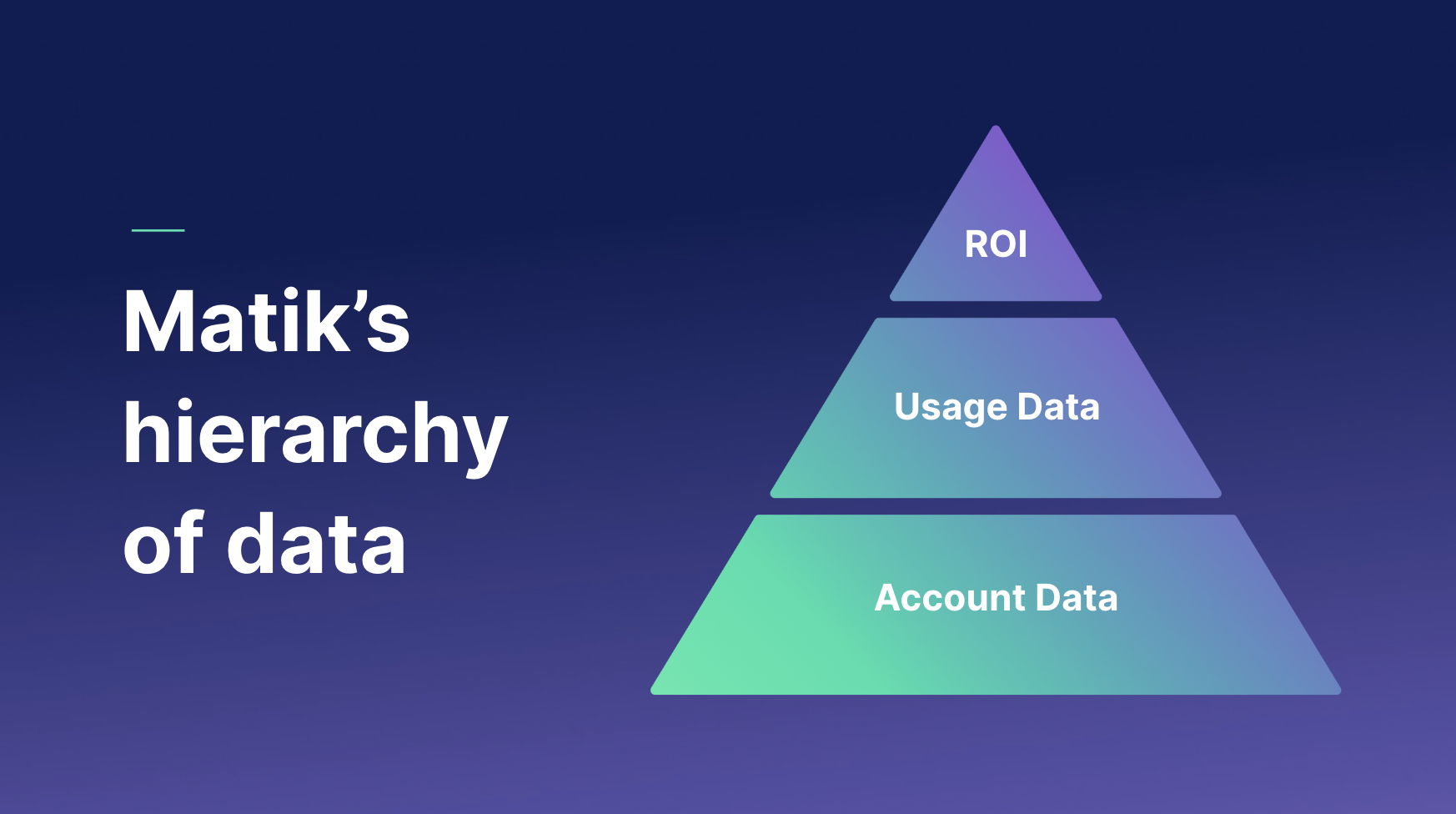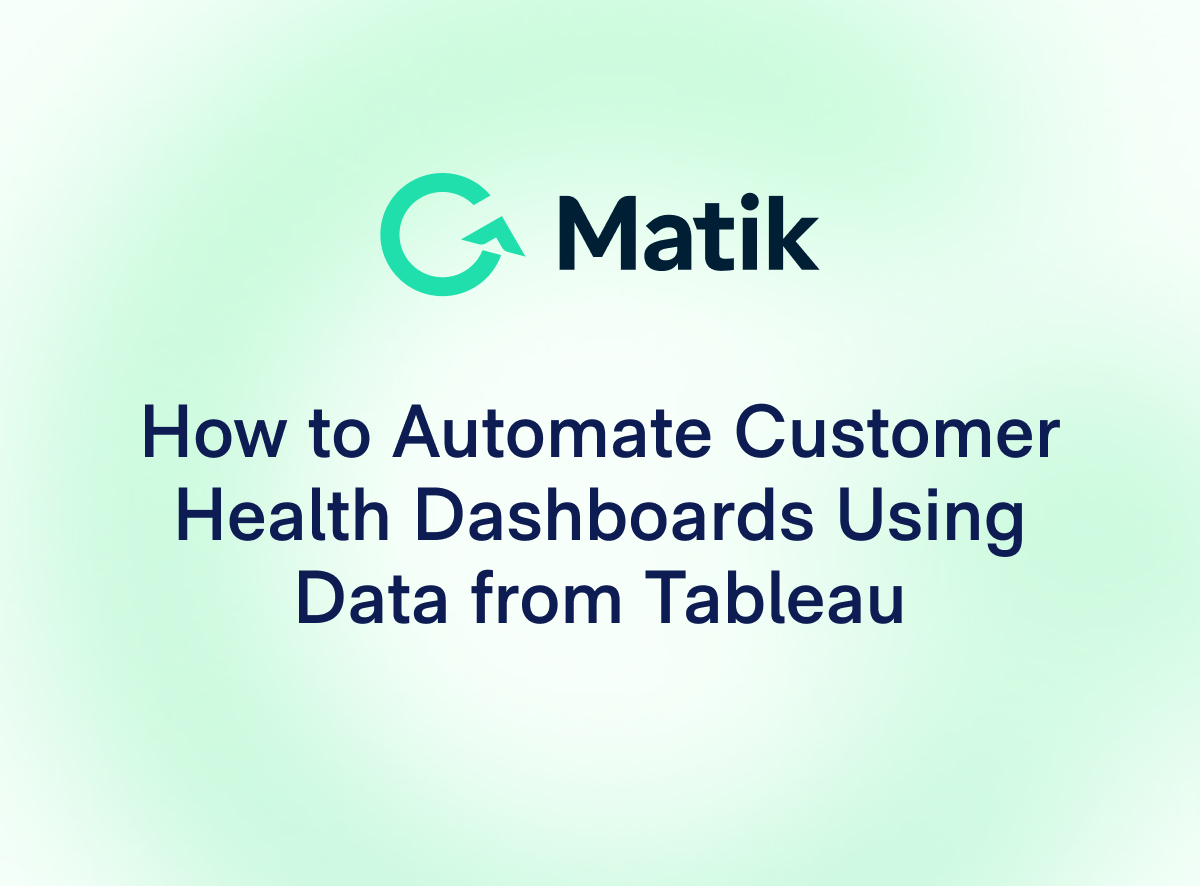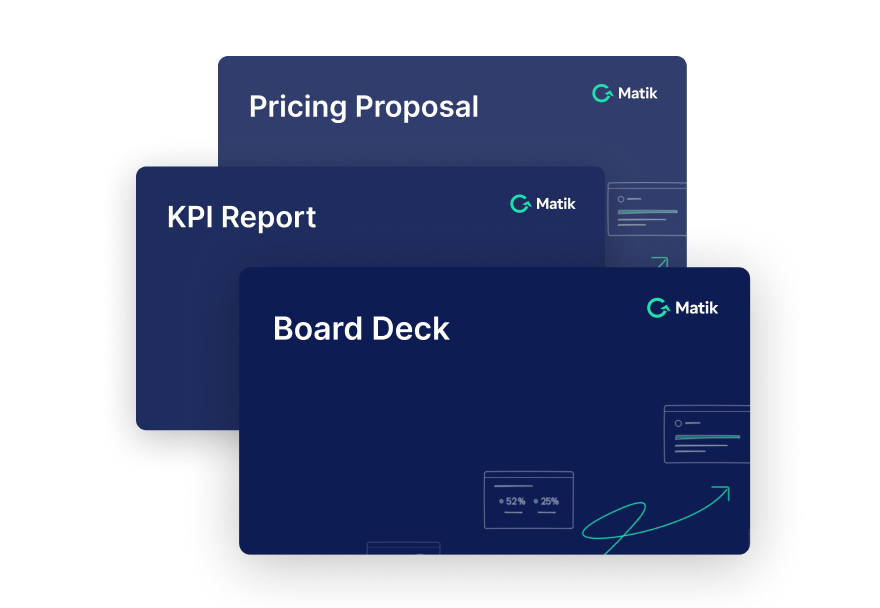Join Our Newsletter
In any organization focused on customer success, data is essential—it’s essential in understanding customers’ needs, and also in proving the value of your product. When used properly, data should be woven into every aspect of the customer lifecycle in order to build credibility and trust. A customer who sees hard evidence that your product is helping them move toward their goals is much more likely to purchase, renew, expand, and spread the word to others about the services you provide.
So, when guiding a customer throughout their journey, which data is most important to share with them, and when is the optimal time to share different types of data? In order to build rapport throughout the customer journey, you need to use your knowledge of your customer to map all of this out as early as possible. Read on to learn how to navigate the data-driven content process using Matik’s Hierarchy of Data, which includes the essential building blocks of delivering data throughout the customer journey.
What is data-driven content?
To start, let’s define what data-driven content actually means. Data-driven content is a type of resource that provides data insights to customers in a digestible, compelling way. Oftentimes, data-driven content will include various data visualizations that help turn obscure data into a comprehensive, easy-to-follow story. Depending on the type of data being shared, it may be presented as a one-pager resource, an interactive Google Slides or PowerPoint presentation, or some combination of the two. Essentially, data-driven content transforms basic customer data into a story that customers can quickly understand and share with key stakeholders.
Put yourself in your customer’s shoes: What would you rather see, a generic data report with dozens of scattered data points, or a comprehensive, visual resource that makes it easy to wrap your head around the information? In the B2B customer success world, data-driven content is vital because it goes above and beyond basic information to prove the value of a product. Customer success teams that go the extra mile to share data-driven content are more likely to build credibility and prove that their product has helped the customer achieve goals.
In order to tell successful data-driven stories, CS teams must have a deep understanding of what matters most to the customer, including their pain points and main motivations for adopting the product. From there, they can tell stories throughout the customer journey that build upon each other, and keep a streamlined feedback loop so they can iterate as needed.
Matik’s Hierarchy of Data
We’ve established that data-driven content is an important part of building trust with customers. But where should you begin when creating a logical strategy for data-driven content that works effectively and efficiently for your own team and customers? A great place to start is with the “Matik’s Hierarchy of Data” framework below.

Similar to Maslow’s hierarchy of needs, as you go up the pyramid, the more “transcendent” the data becomes. In the Matik pyramid, the bottom level is account data, the middle level is usage data, and the top of the pyramid is ROI data. Each of these pieces build upon each other—by starting with the account and usage data on the bottom levels of the pyramid at the beginning of the customer journey, you can build a solid foundation and work toward the pinnacle of the pyramid, which is measuring ROI data. This framework will help your CS professionals build the trust they need with customers at all stages.
The top of the pyramid isn’t necessarily the most important type of data at all stages, but rather the ultimate data goal. By working your way up to ROI data gradually throughout the customer journey, you can make sure all the necessary pieces are in place. While ROI data is the end goal, it’s ideally presented during the renewal stage, and it can’t be delivered as effectively without first focusing on the levels below it.
When developing data-driven content and stories, customer success teams should follow these four essential steps:
- Define the customer journey: By mapping out each main stage in your customer journey, you’ll more easily be able to determine what matters to your customers most in each stage. Examples of the main stages are discovery, negotiation, onboarding, adoption, renewal, and expansion.
- Develop the narrative: Once you’ve mapped out the customer journey, think back to interactions with customers to determine what story you want to tell. Focus on their goals and objectives to build a story that resonates.
- Determine the data you need: Using Matik’s Hierarchy of Data, pinpoint the pieces of data that clearly move your story along. During the onboarding stage, focus on account data and customer goals. In the adoption stage, focus on user and feature adoption and ways to improve it. Then, in the renewal stage, you should have enough background information and insights to present what your customer really wants to see—which is ROI data.
- Make it scalable: In order to take advantage of the power of data-driven storytelling across your entire organization, the process needs to be able to grow with your business. To do this, consider automating the process, creating data-driven content templates, and improving your CS team’s access to data to clear any roadblocks.
Customers have high expectations when it comes to the software they invest in. To set your company apart from others and establish your product as a business-critical tool, your customer success team needs to be empowered to deliver essential data that customers care about. Rather than scrambling to reactively save face at renewal time, using Matik’s Hierarchy of Data to deliver key insights at different stages of the customer journey will improve your interactions, build trust, and help convey the value of your product. Your customers invested in your product for a reason—and it’s your responsibility to show them the concrete evidence behind its success.
---
Interested in Matik? Request a Demo















